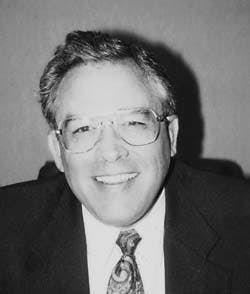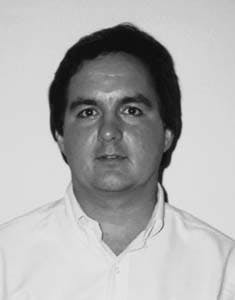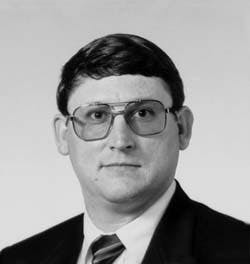OPTIMIZED FRAC PAD AND GEL IMPROVE WELL PRODUCTIVITY
Eddie Fritcher
R. Lacy Inc.
Longview, Tex.Audis Byrd
Halliburton Energy Services
Duncan, Okla.Neil Stegent
Halliburton Energy Services
Kilgore, Tex.
To Help optimize pad size and gel loading for hydraulic fracturing, R. Lacy Inc. used a net pressure calculation based on observations made during minifracs run before each fracture stage.
Optimized pad volume and gel loading yielded greater fracture length and improved productivity of these Cotton Valley gas wells in East Texas.
Although these mature reservoirs have lower bottom hole pressure, recently developed techniques have lessened production decline compared to offsets drilled earlier on 160-acre spacing.
Fig. 1 (90457 bytes) shows three stimulated Cotton Valley wells that are direct offsets. Well 1 was stimulated by conventional methods. Wells 3 and 4 were stimulated by the net pressure increase (NPI) method where the pad was redesigned on location after observing the NPI. Although Well 1 has the highest initial production, Wells 3 and 4 show a lower decline rate that indicates greater fracture length
By optimizing pad and gel on a four-well 13-fracture stage program, R. Lacy Inc. reduced costs by $219,000.
These savings were invested into additional proppant, pumped at moderate rates to keep the fracture within desired boundaries. By maintaining the fracture within boundaries, one can economically obtain 950 ft fracture lengths. Fracture length is the key to the economics of low-permeability wells.
In the Cotton Valley sand, R. Lacy's goal is to achieve 800-950-ft fracture lengths with adequate proppant concentration.
High or wide fractures super-packed with proppant are not believed to be profitable in near or long-term production.
From indications during the fracture operation and post-frac data analysis, the authors have concluded that a net pressure increase (NPI) of 500 psi or less indicates that the fracture length is growing. NPI is defined as the difference between the mid-pad instant shut-in pressure (ISIP) and the final ISIP.
An NPI greater than 500 indicates that fracture length has stopped and near-well bore height and fracture width are increasing.
Fig. 2a (121174 bytes) compares the production of wells with greater designed fracture length (more pad) and those with less length and higher fracture conductivity. The slope of the production curves of wells stimulated by the NPI method indicates greater cumulative production over the life of the well. Early production results indicated that the conventional method of design was superior. Passage of time shows the long-term superiority of the NPI procedure.
DESIGN STUDY
R. Lacy participated with 18 other Cotton Valley producers in a 1991-92 study to optimize completion practices for Cotton Valley wells., The Cotton Valley production enhancement team studied completion and production practices on 275 CV wells. Since then, their findings have been in use in a variety of ways.
Three primary findings were:
- Follow the following four rules of thumb:
- Proppant amount - 1,500-2,000 lb/ft of frac height
- Slurry volume - 700-1,000 gal/ft of frac height
- Proppant concentration - average 2 ppg. This is total proppant/total gel volume where total gel volume includes pad volume
- Injection rate - 10 ft of frac height/bbl/min.
- Run the lowest percent of pad possible
- Reduce gel loading to 20-25 lb/1,000 gal.
Reducing pad size lowers initial treatment costs but can yield high net pressure increases, indicating fracture extension has stopped and packing is occurring.
Reduced gel loading lowers initial cost but may be impractical because proppant transport may be insufficient for extended fracture lengths.
FLUID EFFICIENCY
Traditional fluid efficiency testing (FET) after pumping fracture fluids into the well, shut in the wells for monitoring well pressure to indicate fracture closure or flowed fluids back while monitoring well pressure to indicate fracture closure.
The FET can determine the percent of fluid left in the fracture after pumping. The procedure for the FET test is given in the box.
On R. Lacy fracture jobs, FETs are conducted by using an on site, automatic data acquisition and remote control facility that determines fluid efficiency from data obtained during the pre-pad stage. A typical test requires a shut-down of about 15 min to determine an accurate leakoff coefficient, measurement of formation closure, and fluid efficiency.
Onboard software calculates the net pressure and percent pad required to place the designed proppant volume. Once the fluid efficiency and net pressure have been determined, a guide helps to determine pad volume and pad fluid type (see box).
NET PRESSURE
Two commercially available software systems, considered to be industry standards in treatment modeling, were used to compare computed frac lengths for pad volumes of 37, 22, 13, and 5% (of total fluid volume). The proppant schedule was left constant and only the pad volume was modified.
Fig. 2b (121174 bytes) and Fig. 2c (121174 bytes) illustrate the NPI concept and the effect of pad volume on fracture length.
Simulated production shows the results of different pad volumes applied to four treatments with identical proppant schedules. In tight gas reservoirs, more pad produces more gas, as predicted by a commercial 3D simulator.'
Net pressure plots from each treatment show that as pad volume is reduced, net pressure increases, indicating a wider, shorter fracture (Fig. 2b). (121174 bytes) Because proppant volume remained constant the wider and shorter fracture must contain higher concentrations of proppant.
The proppant concentration plot (Fig. 2c) (121174 bytes) shows the increase in concentration as the net pressure increases and pad volume decreases. This pumping sequence is appropriate in high-permeability formations to increase production in wells where low fracture conductivity limits production.
ln low-permeability wells where fracture conductivity exceeds formation conductivity, frac length controls the production increase. This is illustrated in Fig. 2a (121174 bytes), which shows outputs of four different simulations run on the commercial reservoir simulator mentioned earlier.
The plot of production rate and cumulative production clearly illustrates the need for greater frac lengths in tight reservoirs.
Because 1.5 lb/sq ft of proppant is sufficient to produce gas from a 0.01-md permeability formation, frac length is the controlling dimension needed to cause a production increase. The small amount saved by reducing pad volume does not justify the resulting decrease in production potential.
Some operators have proven that in tight formations, treatments can be placed with as little as 5% pad; however, the reservoir model used 2 has shown that such a treatment would result in a revenue loss of more than $1.2 million/well (Fig. 2a) (121174 bytes), using a net gas price of $1.65/Mcf.
DYNAMIC FLUID LOSS
As discussed previously, the authors have shown proof that net pressure controls frac width. Highly viscous fluids (crosslinked gels) can help control fluid leakoff and increase net pressure in high-permeability reservoirs; however, fluid loss in low-permeability formations ((Fig. 3a) (95680 bytes).
Both linear gels had higher fluid efficiency in low-permeability cells than were provided by crosslinked gels. Laboratory tests investigating fluid-loss characteristics of crosslinked and linear gels were performed with a modified API conductivity test cell.'
API conductivity testing shows fluid leakoff in cores of less than 1.0 md is lower with linear gels than with crosslinked gels. Economics of using linear gels in the pad include crosslinker savings and less pad volume required. Note that in Fig. 3a (95680 bytes), the 40 lb/1,000 gal linear gel gives higher fluid efficiency than 20 lb/1,000 gal gel.
In a test simulating running a linear pad and crosslinked proppant stages, the slope leakoff rate always increased when the crosslinked gel entered the cell (Fig. 3a) (95680 bytes). The test was run to determine the leakoff of a crosslinked gel under the same conditions, and it was found to be higher than the linear gel (Fig. 3a) (95680 bytes).
The use of linear pads has proven to be very effective in low-permeability formations; however, the proppant stages must use crosslinked gel to carry the proppant the great distances required to increase the production from these tight formations.
The leakoff effect in high-permeability formations is just the opposite, as shown in Fig. 3b (95680 bytes) that depicts the effect of crosslinked borate followed by linear HEC (hydroxyethylcellulose). As this graph shows, the linear pad concept works only for formations with permeabilities less than 1.0 md.
Because the Cotton Valley formation has very low permeability, the effects of spurt can be neglected in the FET process. The test is routinely run using a very thin linear fluid (10-20 lb/1,000 gal), and the treatment that follows often has the higher gel concentrations. Because this could cause some error in the pad volume calculated from the thin fluid test, R. Lacy and Halliburton use a spreadsheet program to help determine the approximate effect of different linear gel concentrations. The program predicts the effect that different gel loadings have on FET results.
Fig. 3a (95680 bytes)shows the difference in leakoff between a linear, 20 lb/1,000 gal gel, and a linear 40 lb/1,000 gal gel. From data similar to this, the spreadsheet program helps normalize the FET results for various linear gel loadings. With this normalization technique, R. Lacy and Halliburton can run a thin fluid in the FET and still predict the results that would have been obtained with the more expensive high-loaded gel.
The spreadsheet program is accurate only for linear fluids and low-permeability stimulations, but it allows one to evaluate the response of a thin fluid, then normalize the result for higher gel loads. This reduces the cost of the FET.
DESIGNING A FRAC JOB
The essential difference in the current approach to frac job design is that R. Lacy allows the well to dictate job design in real-time. Formerly, jobs were designed with a certain pad volume, proppant concentration, etc. and were pumped as designed until all planned fluid and proppant were displaced or the job was terminated by a screenout.
In its current procedure, as shown in the box, R. Lacy begins pumping a thin-fluid pad, conducts a fluid efficiency test (FET), and uses fluid correction software to quickly design the remainder of the job. Analysis of well response to the initial portion of pad, guides the treating engineer to the final design. Essentially, the process is pad design "on-the-fly."
PRODUCTION
Fig. la (90457 bytes) shows the decline curves of two of the first four wells that were treated using the FET and optimized pad procedure. Their production decline is not as steep as that of the offset well, Well 1, indicating the frac length of the wells treated with the new techniques did achieve greater lengths than the offset well treated with conventional techniques.
Initial production in the offset well was higher and would lead one to believe it to be the better well. However, the effects of the steeper decline curve can be seen in the cumulative production curves (Fig. lb) (90457 bytes), which shows the wells with the new frac technology have cumulative production exceeding the offset well output after 12 months.
The high initial production of the offset well is a result of higher conductivity and less length. As shown by the model predictions, the increase in net pressure will result in higher conductivities and shorter lengths (Fig. 2d) (121174 bytes) and (Fig. 3a) (95680 bytes).
Many producers try to evaluate stimulation treatments by using the initial cleanup and the first 2 to 3 months production, which would lead one to conclude that the offset well was the better well. However, given time, the lower conductivity and greater length will pay more dividends for a longer time (Fig. lb) (90457 bytes).
Net pressure can indicate fracture length and can optimize fracturing treatments to produce longer fractures, increasing ultimate recovery from a tight gas reservoir. Both the model and field results show the same trends and are being used to increase production in the Cotton Valley formation in East Texas.
LESSONS LEARNED
The following are the lessons learned:
- Fluid efficiency will typically range from 30 to 40% with thin fluid.
- Net pressure will typically range from 100 to 250 psi.
- Fluid-loss materials and polymer concentrations can be greatly reduced when the fluid efficiency and net pressure are high (35% and 175 psi, respectively).
- Always use percent pad = (1 - FE)' to compute pad volumes.
- A net pressure of 300 psi during the FET usually indicates some near-well bore fluid entry problem.
- Use of linear pads and sizing pad volumes to keep the NPI below 500 psi has resulted in shallower decline curves and improved cumulative production.
REFERENCES
- Hunter, J.L. et al., "Cotton Valley Production Enhancement Team Points Way to Full Gas Production Potential," Paper No. SPE 24887, presented at the 67th Annual Technical Conference and Exhibition of SPE, Washington, D.C., Oct. 4-7,1992.
- Resources Engineering Systems, Inc., "Fracpro" user's manual Version 6.1, May 1993.
- McGowen, J.M., and McDaniel, B.W., "The Effects of Fluid Preconditioning and Test Cell Design on the Measurement of Dynamic Fluid Loss Data," Paper No. SPE 18212, 63rd Annual SPE Technical Conference and Exhibition, Houston, Oct. 2-5, 1988.
- Nolte, K.G., "A General Analysis of Fracturing Pressure Decline With Application to Three Models," SPEFE, December 1986.
- Nolte, K.G., "Determination of Proppant and Fluid Schedules From Fracturing-Pressure Decline," SPEFE, July 1986.
- Lee, W.S., 'Pressure Decline Analysis With the Christianovich and Zheltov and Penny-Shaped Geometry Model of Fracturing," Paper No. SPE 13872, SPE/DOE Low Permeability Gas Reservoirs Conference, Denver, May 19-9?, 1985.
- Shlyapobersky, J., Wong, G.K., and Walhaug, W.W., "Overpressure Calibrated Design of Hydraulic Fracture Stimulations,' Paper No. SPE 18194, 63rd Annual SPE Technical Conference and Exhibition, Houston, Oct. 2-5,1988.
- Shlyapobersky, J., et al., "Field Deterioration of Fracturing Parameters for Overpressure Calibrated Design of Hydraulic Fracturing," Paper No. SPE 18195, 63rd Annual Technical Conference and Exhibition, Houston, Oct. 2-5, 1988.
- Wright, T.B., et al., "Identification and Comparison of True Net Fracturing Pressures Generated by Pumping Fluids with Different Rheology into the Same Formations," Paper No. SPE 26153, SPE Gas Technology Symposium, Calgary, Alberta, Canada, June 28-30, 1993.
THE AUTHORS
Fritcher holds a BS in mechanical engineering from the University of Texas at Arlington. He is a registered professional engineer in Texas.
Stegent joined Halliburton in 1980 after receiving a BS in engineering from Texas A&M University. He is a registered professional engineer (Texas).
Byrd has a BS in mechanical engineering from Louisiana Tech University. He is a registered professional engineer in Oklahoma and holds five U.S. patents.
Copyright 1995 Oil & Gas Journal. All Rights Reserved.



